A day in Saint Petersburg
Slowly I am moving in line to enter the Hermitage, percolating through the security check to leave plastic bottles and sharp items as residue. Cleansed and well, I decorate myself with digital devises to ensure my experience is to be as informative and productive as possible. With a headphone on my ears, and my camera in front of my eyes I could not help but wonder if I would get some electric wheels to speed up my sluggish leg movement.
After meandering through the museum for a few hours, I start to photograph the people instead of the art. While getting hypnotized by the endless waves of people together with whom I am peristaltically pumped through the bowels of the museum, trying to find some temporary anchor points of attention, I decide to freely write down some thoughts which floated up into my mind.
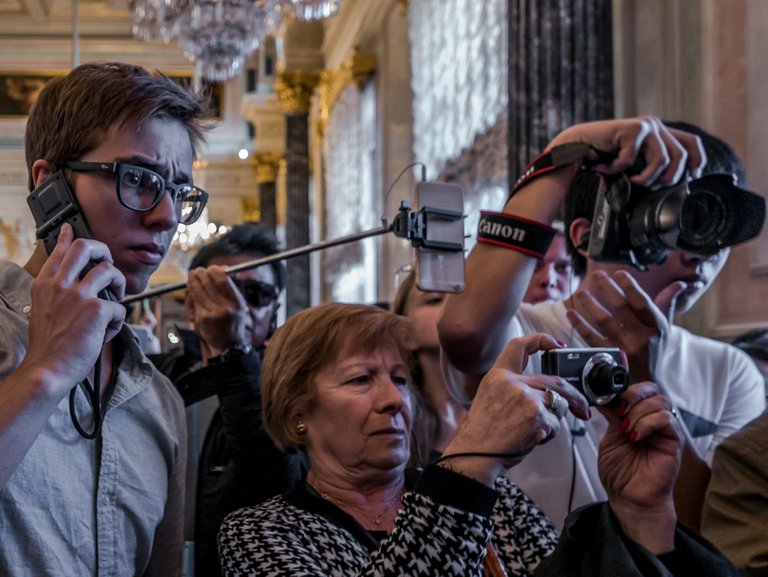

Inside the bowels of the Hermitage
Are you ready? Wait for the wheel to stop spinning while I fuse myself with technology. As a Freudian Prosthetic God; my senses are extended with happiness as its ultimate promise. Using my new tele-eye implants, to auto authenticate Rembrandt's brush strokes in exchange for fruitless rewards, makes me blind of his illuminated space. I forget to encounter, I don’t think, eat generic and boost my memory with recordings of glorious voices through my briefly enlarged ear scalps.
I am immersed in the seemingly comfortability of everything forbidden or previously unachievable, while being kept in a stranglehold of endless dividualisation. I float in a river of people polishing the precious artifacts and do not notice that the deceased Chronos no longer times the sunrise. The only thing I do is super charge my device and stream all my fragments of attention to the yottabytes of worldwide compounded super memory, co-forging our biggest contemporary monument, which plunges back into the event recognized by me as the polishing river.
Transgressively waking up I vaguely observe an omni scientific aluminum anti-scratch protection case with rounded edges shielding our planet while vibrating to the point of total exhaustion with the purpose of emitting cyber-particles throughout the cosmos; an ever-expanding enterprise attempting to seduce the next civilization with ultra-urgent utility add-ons.

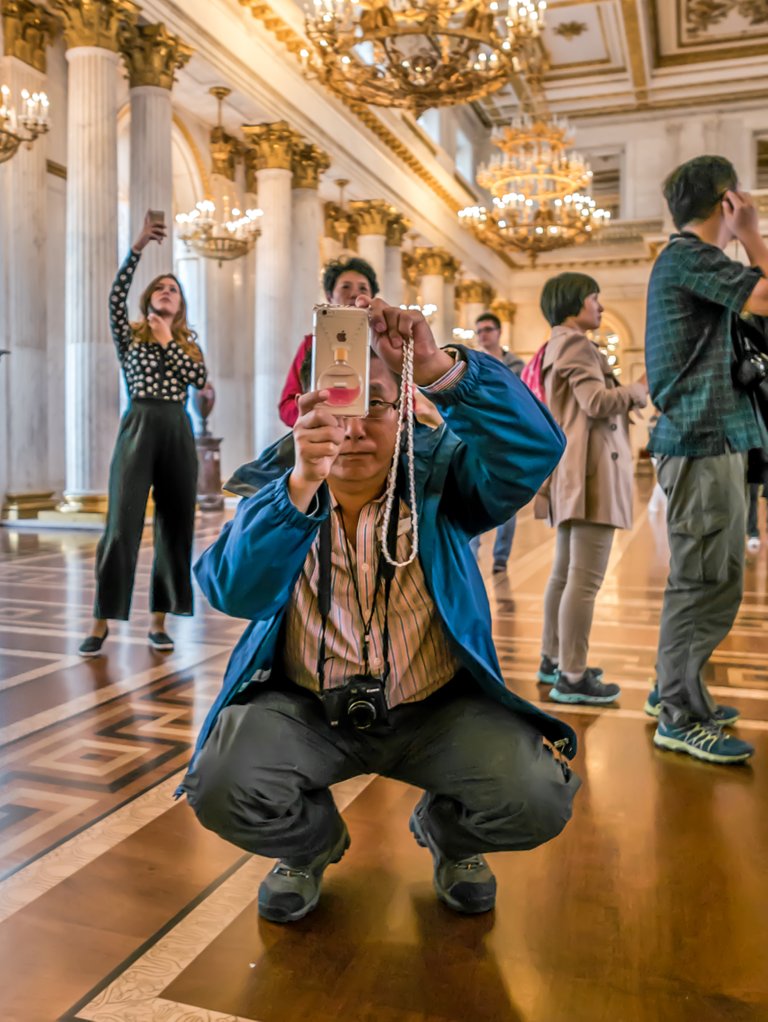
Outside again
To make some sense of all of this, I turn to the literature of philosophers and an architect.
As the Slovenian philosopher Slavoj Zizek points out in his lecture, Object Petit a and Digital Civilization, we use all these gadgets which enhance our senses, and continues to argue that the idea of the Prosthetic God by Freud, is more relevant than ever before. He refers to a passage from Civilization and discontents by Freud:
Long ago [man] formed an ideal conception of omnipotence and omniscience which he embodied in his gods. To these gods he attributed everything that seemed unattainable to his wishes, or that was forbidden to him. One may say, therefore, that these gods were cultural ideals. Today he has come very close to the attainment of this ideal, he has almost become a god himself. Only, it is true, in the fashion in which ideals are usually attained according to the general judgment of humanity: not completely, in some respects not at all, in others only half way. Man has, as it were, become a kind of prosthetic God. When he puts on all his auxiliary organs he is truly magnificent; but those organs have not grown on to him and they still give him much trouble at times … Future ages will bring with them new and probably unimaginably great achievements in this field of civilization and will increase man’s likeness to God still more. But in the interests of our investigations, we will not forget that present-day man does not feel happy in his Godlike character.(1)
Where the philosopher Freud points out to the idea that present-day man does not feel happy, perhaps the Dutch architect and theorist Rem Koolhaas gives an answer inside his publication A Harvard Guide on Shopping, specifically in Junkspace . (2) Here he talks about that the celebration of technology without any exception, led somehow to a form of poisonous outcome: Junkspace.
Junkspace is what remains after modernization has run its course or, more precisely, what coagulates while modernization is in progress, its fallout. Modernization had a rational program: to share the blessings of science, universally. Junkspace is its apotheosis, or meltdown... (2)
The reason why Junkspace is considered a negative thing (meltdown) is explained in the very first sentence of the article: Rabbit is the new Beef. (2) I interpret the rabbit as a trick, something out of nothing like the rabbit out of the hat. Whereas the beef refers to the true content as one might ask: Where is the beef? In other words: Fake is the new truth.
Back to my Hermitage experience. It was a mix of overcrowdedness and a hyper focus on shiny led screens. The museum space became for me like a mall, with the focus on shopping for pictures of the most fantastic paintings. By doing so fragmenting the experience into horizontal slices, which light and color, as mine, can be altered in post. As an event It was powerful and beautiful on itself, but it gave another meaning to the masterpieces: less beef, more rabbit.
The next day I went at opening hours, and as the first visitor I could calmly walk for half an hour through the great halls of the Hermitage without encountering anyone, masterpiece after masterpiece! This made me think about the effect of the context in which art is shown. A Lisitsky in a shopping mall, on a historical Soviet mural, or in the good old white cube?
Respectfully,
Lex te Loo
- Freud, S., Riviere, J., & Strachey, J. (1958). Civilization and its discontents.
- Koolhaas, R. (2002). Junkspace. October, 175-190.
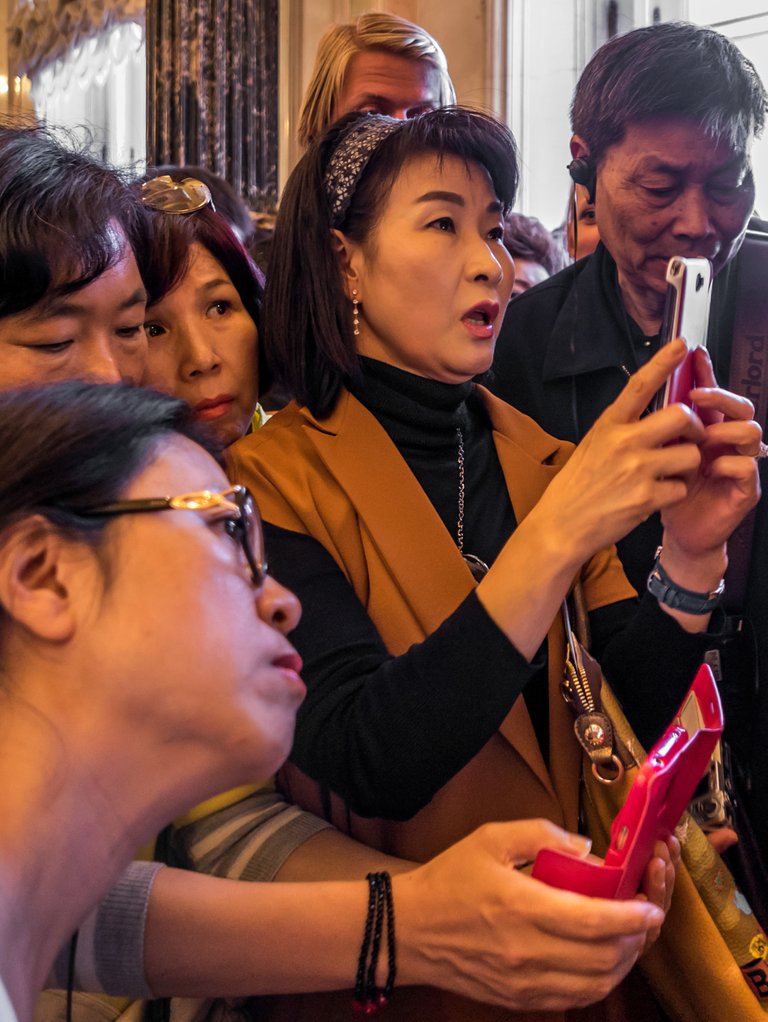
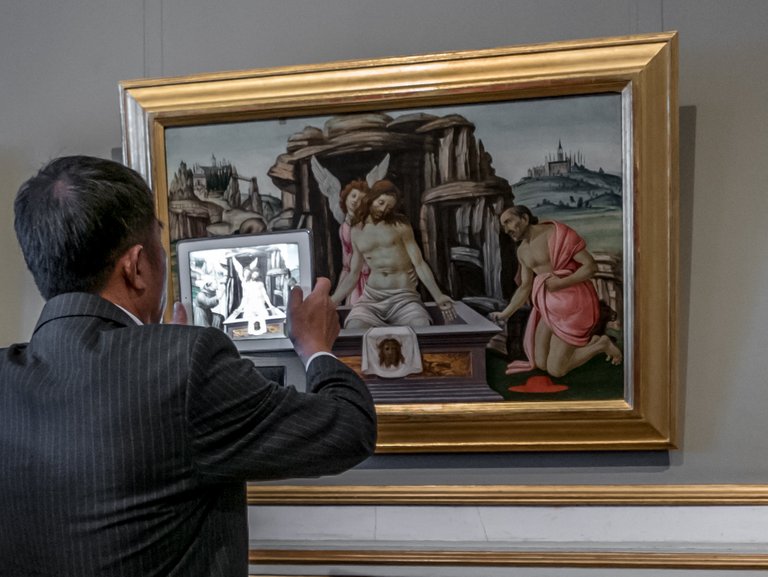
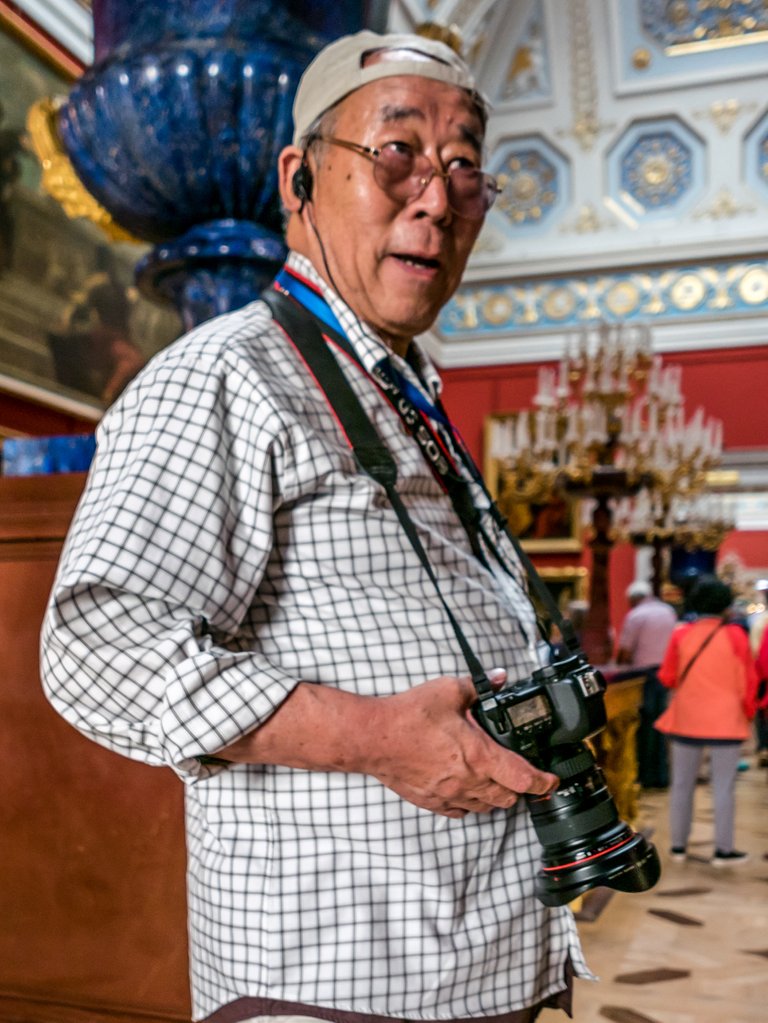
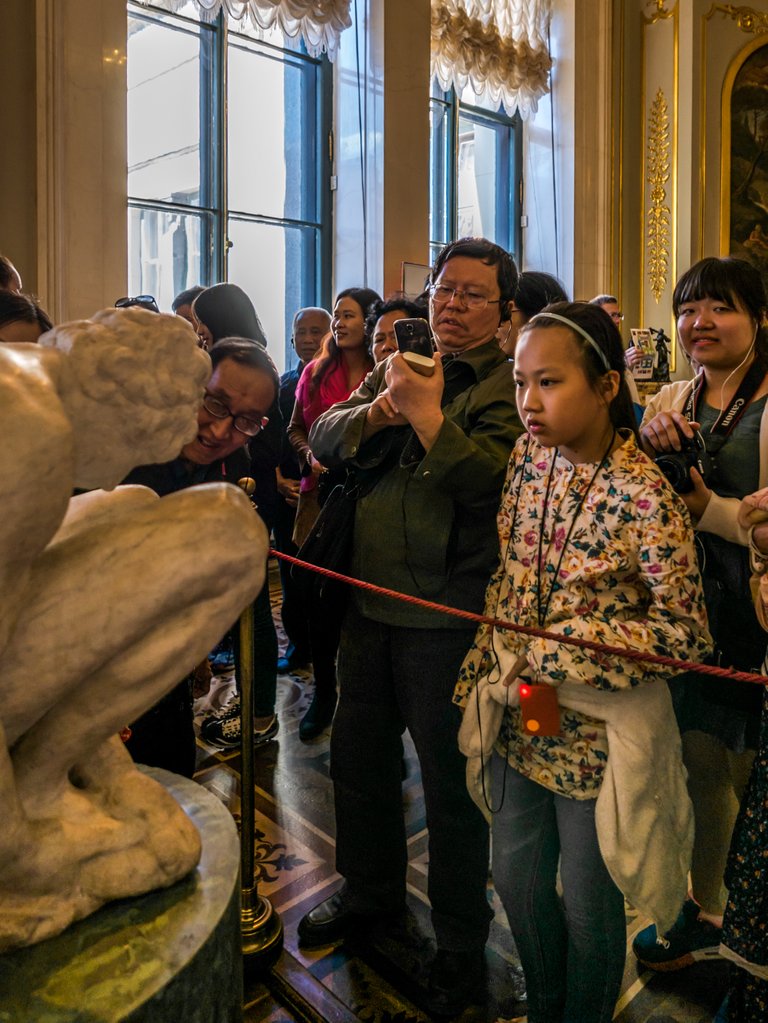
All pictures are shot by me with my Lumix LX100 and post edited in Lightroom.